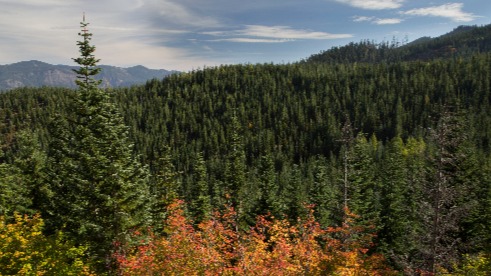Meeting ambitious reforestation goals will require expanded capacity for seed collection, nursery production, workforce development, and improvements in planting treatment practices.
Featured Science
See how natural climate solutions are paying off.
Lower Cost and More Feasible Options to Reforest the U.S.
The power of restoring forests as a natural climate solution depends heavily on how much new forest area we can gain. The good news is there are up to 133 million acres of opportunity in the United States to restore forest cover for climate mitigation.
Effects of Cheatgrass Invasion on U.S. Great Basin Carbon Storage
Non‐native, invasive cheatgrass is pervasive in sagebrush ecosystems in the Great Basin of the western U.S., competing with native plants and promoting more frequent fires. As a result, cheatgrass invasion decreases biodiversity and alters carbon storage in the region.
Nature and Climate Solutions for Minnesota
Natural climate solutions offer a 26 million metric tonne CO2e annual mitigation potential in Minnesota. This is equal to taking seven coal plants offline and represents an annual value of $390 million.
Natural Climate Solutions: the Business Perspective
The world is on track to surpass a 1.5°C global temperature rise as soon as 2040.
Natural Climate Solutions for the United States
Limiting climate warming to <2°C requires increased mitigation efforts, including land stewardship, whose potential in the United States is poorly understood.
Natural Climate Solutions
Most nations recently agreed to hold global average temperature rise to well below 2 °C. We examine how much climate mitigation nature can contribute to this goal with a comprehensive analysis of “natural climate solutions”
TNC reThink Soil
A roadmap for collective action to secure the conservation and economic benefits of healthy soils.
Ecosystem Management and Land Conservation can Substantially Contribute to California’s Climate Mitigation Goals
Modeling efforts focused on future greenhouse gas (GHG) emissions from energy and other sectors in California have shown varying capacities to meet the emissions reduction targets established by the state.









